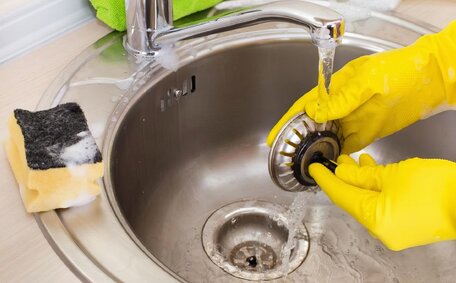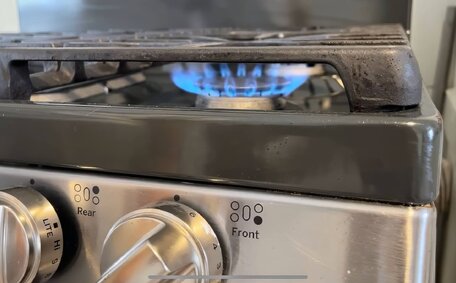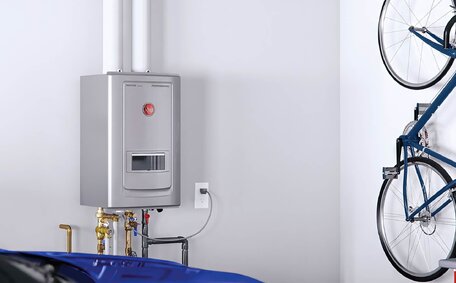Introduction to Hot Water Drain Valves
A hot water drain valve is a crucial component found at the bottom of most residential and commercial hot water systems. The drain valve’s function is to offer a secure means to empty the hot water tank, underpinning the importance of a regular maintenance schedule.
Effective drain valves are integral to maintaining water pressure, prolonging system longevity, and preventing leaks.
As a leading plumbing company based in Pennant Hills, Sydney, We strongly recommend routinely inspecting the pressure relief valve as a crucial element of water heater upkeep. Addressing minor issues promptly can cause your hot water system fewer problems and save on hassle and expense down the track. Conversely, ignoring problems could mean significant components stop working, resulting in much bigger headaches - from parts wearing out prematurely to full system failures.
This guide will address critical topics including drain valve fundamentals, the significance of maintenance, symptoms of malfunctions, quick DIY solutions, and indications for professional assistance. Read on to learn how to address common hot water service drain valve problems.
Common Drain Valve Issues to Watch For
There are several common issues to watch out for with your hot water system’s drain valve:
- Leakage - If you notice water dripping or pooling from the heater drain valve or pipes connected to it, the valve likely needs to be replaced.
- Blockage due to sediment - Over time, mineral deposits and sediment can build up inside the tank and clog the drain valve, preventing water from properly draining.
- Corrosion and wear - Drain valves can corrode over many years of use, eventually breaking down and leaking water. It’s essential to replace aging valves before they fail to maintain peak performance of your hot water system.
- Inability to fully open/close - Drain valves can get stuck open, causing a continuous leak, or stuck closed so that water can’t be drained for maintenance.
- Odd noises - Clanking, squeaking or other strange sounds often indicate issues with the valve’s internal components and connections.
Periodic tank flushing is essential to remove sediment, enhancing both the efficiency and lifespan of your hot water system. When drain valve problems arise, a professional inspection can identify underlying causes early on, before leaks or breakdowns escalate.
Identifying a Faulty Drain Valve
If you detect a problem, assess your hot water system’s drain valve by following these steps:
- Turn off the power at the main circuit breaker and inspect the pilot light and gas supply valve, if relevant. Allow time for the gas hot water in the tank to fully cool.
- Locate the water supply’s drain valve at the bottom your tank. It may be recessed behind a water service access panel.
- Position a container beneath the drain valve to collect any escaping water.
- Gradually open the drain valve. If water leaks around the valve instead of flowing into the container, replacement is likely necessary.
- Check for visible corrosion and mineral build-up on the valve and surrounding pipes, a sign of wear.
- Try to completely close the drain valve after water has drained. If it won’t fully shut, is inoperable manually, or continues to leak, it needs replacing.
- Make sure to listen for any odd sounds like squeaking or rattling coming from the hot water tap valve when operating it.
- After checking, close the drain valve to restore water circulation and reactivate the hot water system power.
If inspection reveals clear signs of a faulty drain valve in your hot water heater, don’t hesitate to call us, a team of professional plumbers, to learn how to rectify the issue immediately and prevent leaks or other complications. Particularly when water system complexities arise, never attempt to service an electric hot water system on your own.
When to Replace a Drain Valve
Consider replacing your hot water system’s drain valve at these critical junctures:
- The valve is leaking water and attempts to tighten connections or lubricate components have not stopped dripping or pooling.
- Corrosion, heavy mineral deposits or other visible damage makes repair seem unlikely to resolve issues.
- The valve cannot be fully opened or closed manually due to mechanical failure or sticking.
- Odd noises, rattling or vibration occurs when operating the valve.
- Your professional inspection recommends replacement due to wear and tear or sediment build-up.
- Your hot water system’s anode rod and heating element may also need changing when replacing the valve.
Replacing a defective drain valve can prevent leaks, pressure inconsistencies, and drops in efficiency due to sediment accumulation. If in doubt, it’s best to consult a licenced plumber who can help you decide when to replace vs attempt repair.
How to Replace a Drain Valve
Draining the Water Heater
- Disconnect the hot water system from the main power supply, and the gas if you have a gas water heater.
- Locate the drain valve near the base of the tank. It may be concealed behind a removable panel.
- Place a large bucket or pan beneath the drain valve.
- Gently open the valve to begin drainage, capturing water in the bucket. Be cautious, as the released water may initially be hot.
Removing the Old Valve
- Use an adjustable wrench to loosen and disconnect the inlet and outlet pipes attached to the drain valve.
- Twist the valve’s housing counterclockwise to unscrew it from the tank.
- Inspect the removed valve and pipes for corrosion or damage. Replace pipes if necessary.
Installing a New Valve
- Ensure tank interior surfaces are clean where the new valve will seat.
- Apply plumber’s tape to valve threads and screw it into the tank opening clockwise until hand tight.
- Reconnect hot and cold water pipes, tightening with your wrench.
- Restore power and gas to the system once fully reassembled.
- Check for leaks as the tank refills. Tighten connections if dripping occurs.
Best Practices for Drain Valve Maintenance
Regular drain valve maintenance helps optimise your hot water system’s efficiency and extend its operational lifespan. Simple inspections, flushing and part replacements can prevent much larger issues down the track.
Regular Inspections
Conduct an annual visual inspection of the valve and connected pipes for corrosion, mineral deposits, and leaks to maintain their integrity and ensure adequate pressure. Listen for odd sounds which might indicate issues with the relief valve, such as no water coming, when operating the handle. Ensure you can fully open and close the valve.
Signs of Wear
If your drain valve is leaking, corroded, or not fully operational, thus compromising hot water efficiency, it should be replaced. Odd noises also indicate replacement is needed. Consider having the anode rod and heating element checked at this time as well.
Set the thermostat of your hot water system between 50°C and 60°C to maintain optimal water temperature and prevent excessive sediment build-up. Higher temperatures accelerate limescale formation and corrosion.
Following these basic maintenance steps will help safeguard your investment in a reliably functioning hot water system for years to come.
When to Call a Professional
You’ll need to reach out to a professional for your gas water heaters problems when drain valve issues persist or pose safety risks despite attempted DIY repairs. As electric water systems involve electricity, gas lines, pressures and temperatures beyond safe thresholds for amateurs, we strongly caution homeowners not to go beyond basic checks and maintenance.
Immediately contact a licenced plumber if you encounter any of these issues with your hot water system’s drain valve:
- Constant leaking hot that continues after trying to tighten fittings
- Inability to manually close the valve once opened
- Unusual noises, such as vibration or rattling, which suggest there could be no hot water coming from the valve area
- Corroded, cracked or damaged valves and connecting pipes
- A blockage from sediment build-up could result in no hot water flow
- The drain valve or handles are stuck and immovable
Our team will diligently check hot water systems of all makes and models, ensuring comprehensive service with extensive training and expertise in plumbing. We can accurately diagnose issues and take proper safety precautions when performing repairs.
A properly maintained drain valve optimises efficiency and can prolong the operational lifetime of water heaters, which typically range between 8 to 12 years. Minor preventative fixes also cost far less than whole replacements or emergency callouts down the track.
For reliable drain valve repairs, replacements or general hot water heater troubleshooting, contact our team at Pennant Hills Plumbing on 1300 349 338 or [email protected].






